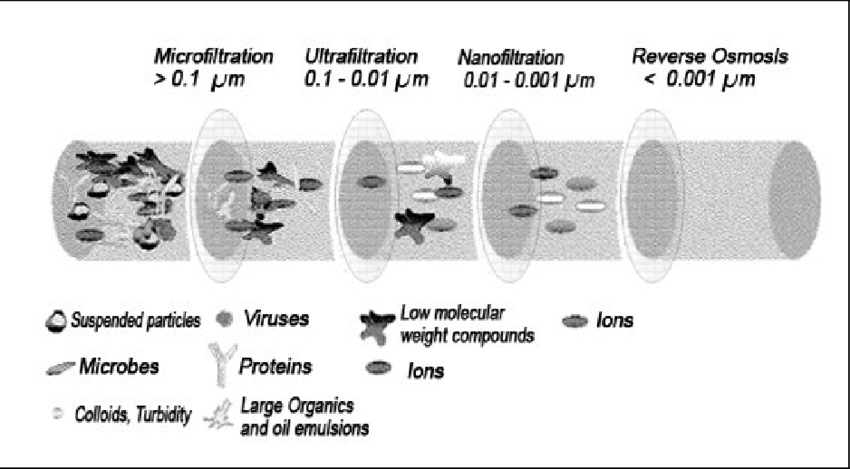
Membrane filtration systems are widely used in industries such as water treatment, food and beverage, pharmaceuticals, and chemical processing. These systems provide efficient filtration by removing contaminants, ensuring product purity, and improving process efficiency. However, to maintain their effectiveness and longevity, regular maintenance and cleaning are essential.
In this guide, we will discuss the best practices for maintaining and cleaning membrane filtration systems to maximize their performance and extend their lifespan.
Why Regular Maintenance of Membrane Filtration Systems is Crucial
Membrane filters can accumulate deposits over time, leading to fouling, reduced efficiency, and increased operational costs. Proper maintenance helps:
- Extend the lifespan of membranes
- Maintain consistent filtration efficiency
- Reduce downtime and operational costs
- Prevent membrane fouling and scaling
- Ensure compliance with industry regulations
Now, let’s explore the best practices for maintaining and cleaning membrane filtration systems.
Routine Maintenance Practices
To keep your membrane filtration system functioning optimally, follow these essential maintenance practices:
1. Monitor System Performance
Regularly check key system parameters such as:
- Flow rate – Ensure consistent water or fluid flow.
- Pressure drop – A sudden increase may indicate clogging.
- pH levels – Maintain within the recommended range to prevent damage.
- Salt rejection (for RO membranes) – Any decrease may signal membrane fouling.
Monitoring these indicators will help detect issues early and prevent costly failures.
2. Implement Pre-Treatment Measures
Effective pre-treatment helps reduce contaminants that cause membrane fouling. Common pre-treatment steps include:
- Filtration of large particles using sediment filters
- Chemical dosing to control scaling and biofouling
- Softening hard water to prevent mineral deposits
3. Replace Worn-Out Parts
Over time, components such as seals, O-rings, and pressure gauges wear out. Regularly inspect and replace these parts to prevent leaks and maintain efficiency.
4. Conduct Regular Inspections
Perform visual and functional inspections to check for leaks, pressure inconsistencies, and membrane integrity. Addressing minor issues promptly prevents major system failures.
How to Clean Membrane Filtration Systems
Cleaning your membrane filtration system is vital for maintaining performance and prolonging membrane life. Follow these best practices:
1. Identify the Type of Fouling
Different types of fouling require specific cleaning methods. The common types include:
- Scaling – Caused by minerals like calcium and magnesium.
- Biofouling – Growth of bacteria and microorganisms.
- Organic fouling – Accumulation of oils, greases, or organic matter.
- Colloidal fouling – Due to suspended particles and silica.
Understanding the type of fouling helps determine the appropriate cleaning method.
2. Use Proper Cleaning Solutions
Selecting the right cleaning agent is crucial. Common cleaning solutions include:
- Acidic cleaners – Remove mineral scale deposits.
- Alkaline cleaners – Eliminate organic and biological fouling.
- Biocides – Prevent microbial growth and biofouling.
Always follow manufacturer recommendations when selecting and using cleaning chemicals.
3. Follow the Correct Cleaning Procedure
A step-by-step cleaning procedure ensures effective membrane cleaning:
- Flush the system – Remove loose debris by flushing with clean water.
- Circulate cleaning solution – Introduce the cleaning solution at the recommended flow rate.
- Soak the membranes – Allow the solution to sit for the specified duration.
- Rinse thoroughly – Flush with clean water to remove residual chemicals.
- Reassemble and test – Check for leaks and restore system operation.
4. Perform Cleaning at the Right Frequency
Cleaning frequency depends on system usage and water quality. Signs that indicate cleaning is needed include:
- Increased pressure drop across the membrane
- Reduced flow rate
- Decreased filtration efficiency
Regular maintenance schedules help prevent severe fouling and costly downtime.
Best Practices for Long-Term Membrane Care
- Follow manufacturer guidelines – Always adhere to the system’s manual for cleaning and maintenance.
- Use high-quality feed water contaminants before filtration.
- Avoid overuse of cleaning chemicals – Excessive chemicals can degrade membrane material.
- Train personnelEnsure staff understands proper maintenance and cleaning procedures.
Conclusion
Maintaining and cleaning membrane filtration systems is essential for ensuring efficiency, longevity, and cost-effectiveness. By implementing regular inspections, proper cleaning techniques, and pre-treatment measures, industries can optimize their filtration processes and avoid expensive system failures. Following these best practices will help keep your membrane filtration system in peak condition for years to come.